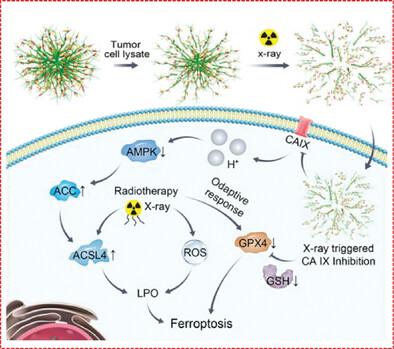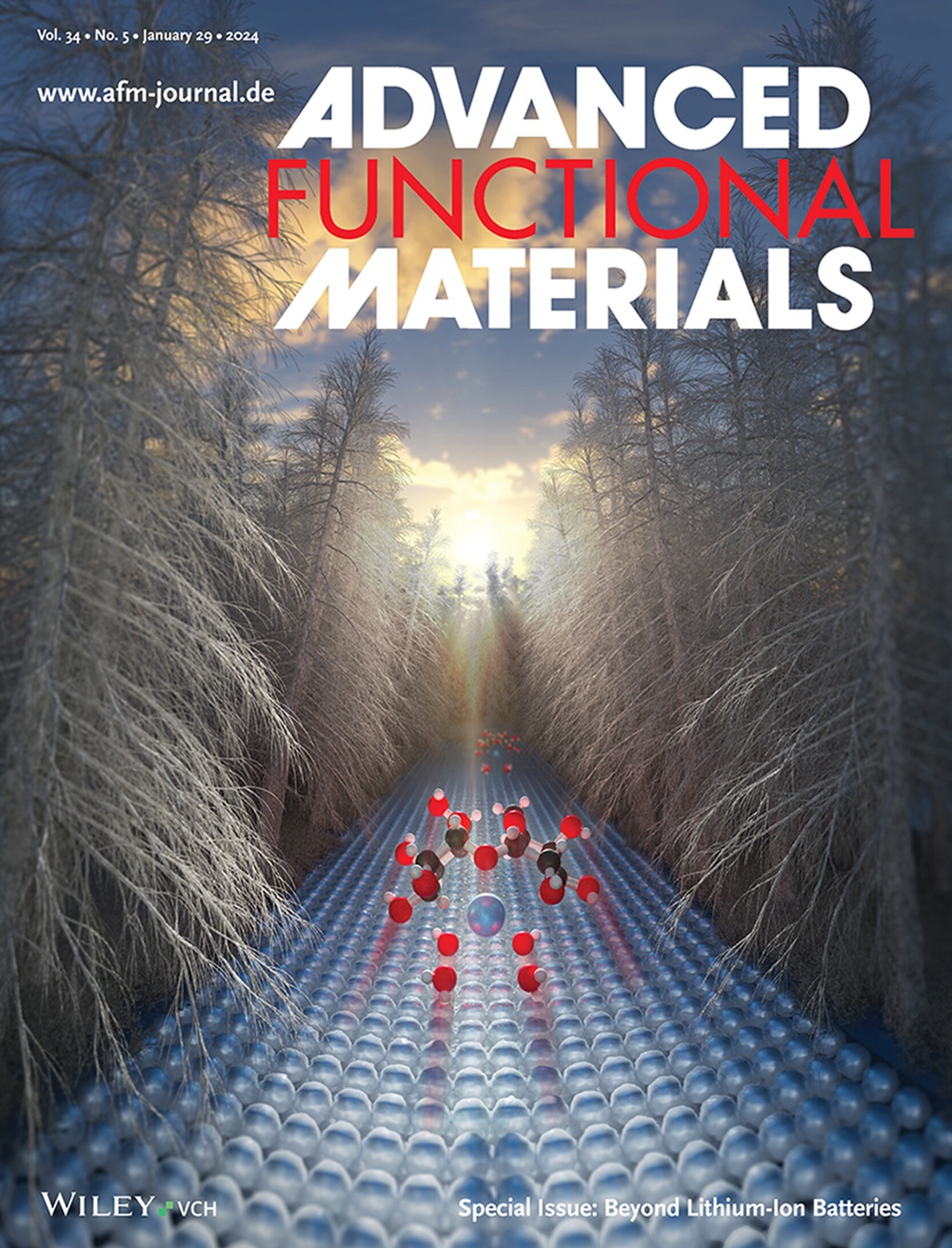X射线诱导的CA IX抑制纳米平台促进瘤内酸中毒诱导的癌症铁变态反应
IF 18.5
1区 材料科学
Q1 CHEMISTRY, MULTIDISCIPLINARY
引用次数: 0
摘要
放疗诱导的铁突变伴随着肿瘤细胞铁突变抑制基因表达的适应性反应。本文构建了一种负载碳酸酐酶(CA IX)抑制剂(4-(2-氨基乙基)苯磺酰胺(ABS))的可降解原位生成硅锰复合体系,形成DSiMn-ABS纳米系统,以提高缺氧肿瘤细胞的铁突变敏感性,改善放疗效果。该系统可在肿瘤环境和 X 射线中不断降解,释放出二氧化锰(MnO2)和 ABS;通过 MnO2 影响谷胱甘肽过氧化物酶 4(GPX4)的活性,消耗谷胱甘肽(GSH),从而进一步抑制肿瘤细胞的铁血防御系统,最终有效提高放疗的疗效。最终,该系统可有效抑制肿瘤生长。因此,这种可降解系统可以利用双敏放疗为肿瘤放疗提供新思路。本文章由计算机程序翻译,如有差异,请以英文原文为准。

X-Ray-Triggered CA IX Inhibition Nanoplatform Promotes Intratumoral Acidosis-Induced Cancer Ferroptosis
Radiotherapy-induced ferroptosis is accompanied by an adaptive response to the expression of tumor cell ferroptosis suppressor genes. Herein, a degradable and in situ generated silicomanganese composite system loaded with carbonic anhydrase (CA IX) inhibitor (4-(2-aminoethyl) benzenesulfonamide (ABS) is constructed to form a DSiMn-ABS nanosystem to improve the ferroptosis sensitivity of hypoxic tumor cells and improve the radiotherapy effect. The system can be continuously degraded in the tumor environment and X-rays, releasing Manganese dioxid (MnO2)and ABS; Thereby inhibiting the activity of CA IX, inducing acidification inside tumor cells, regulating the AMP-activating protein kinase (AMPK)/Acetyl-CoA carboxylase(ACC) axis to increase the sensitivity of tumor cells to ferroptosis, and depleting glutathione (GSH) through MnO2 influencing glutathione peroxidase 4 (GPX4) activity, which further inhibits the ferroptosis defense system of tumor cells, and ultimately effectively improves the therapeutic efficiency of radiotherapy. Ultimately, the system can effectively inhibit tumor growth. Therefore, this degradable system can utilize double-sensitized radiotherapy to provide new ideas for tumor radiotherapy.
求助全文
通过发布文献求助,成功后即可免费获取论文全文。
去求助
来源期刊

Advanced Functional Materials
工程技术-材料科学:综合
CiteScore
29.50
自引率
4.20%
发文量
2086
审稿时长
2.1 months
期刊介绍:
Firmly established as a top-tier materials science journal, Advanced Functional Materials reports breakthrough research in all aspects of materials science, including nanotechnology, chemistry, physics, and biology every week.
Advanced Functional Materials is known for its rapid and fair peer review, quality content, and high impact, making it the first choice of the international materials science community.
 求助内容:
求助内容: 应助结果提醒方式:
应助结果提醒方式:


